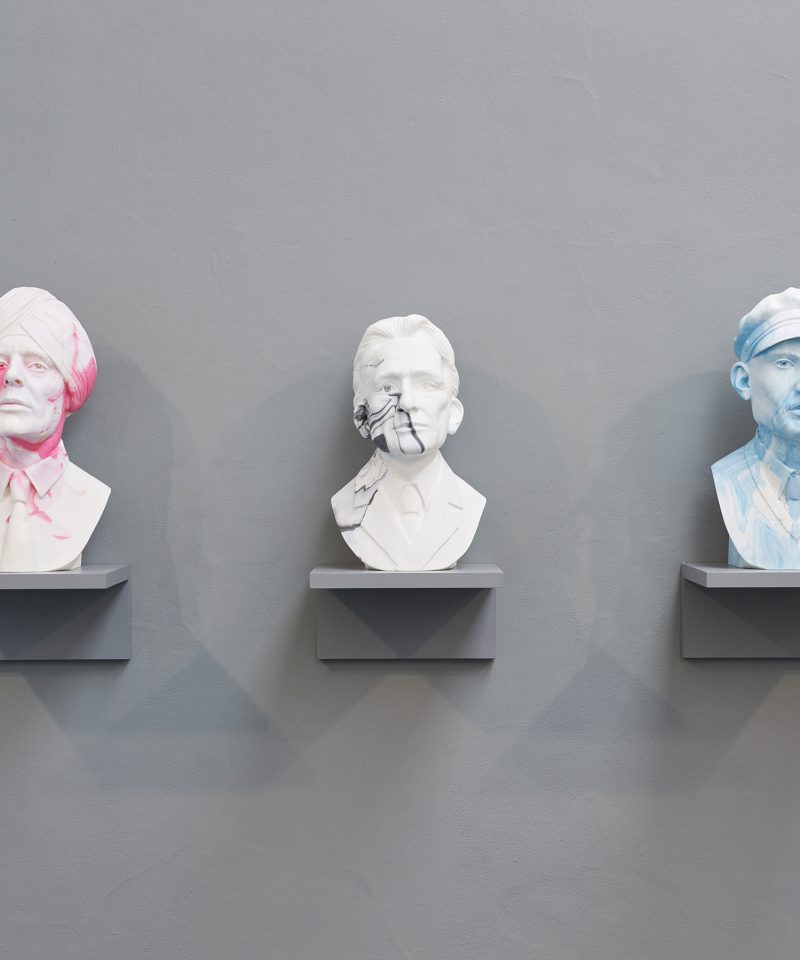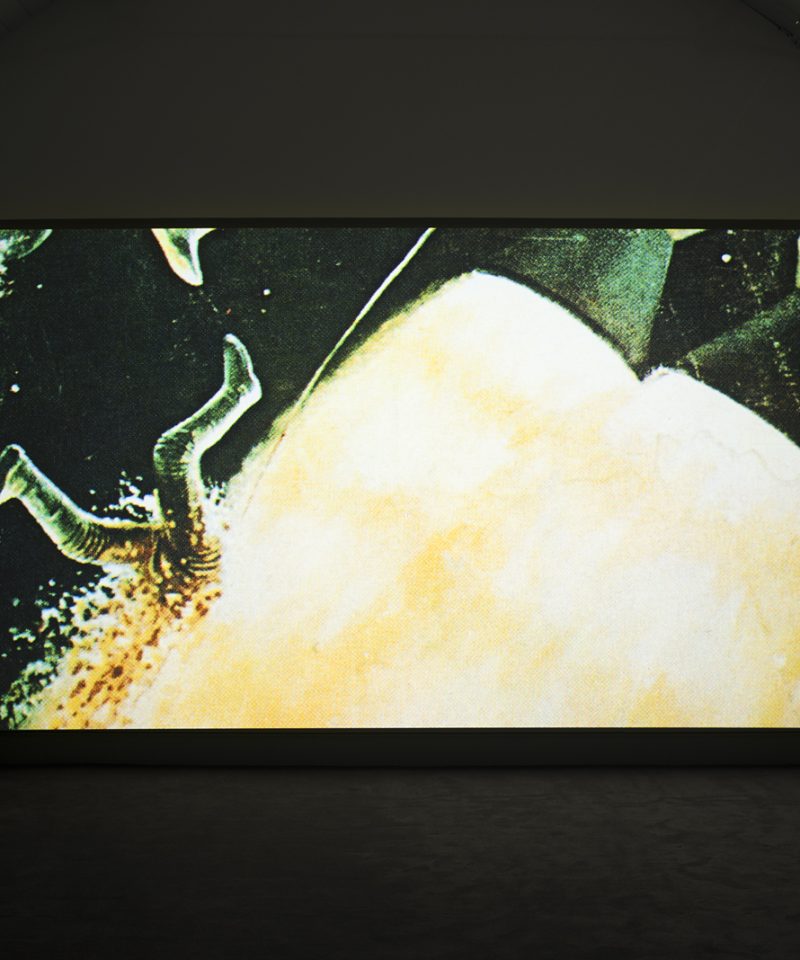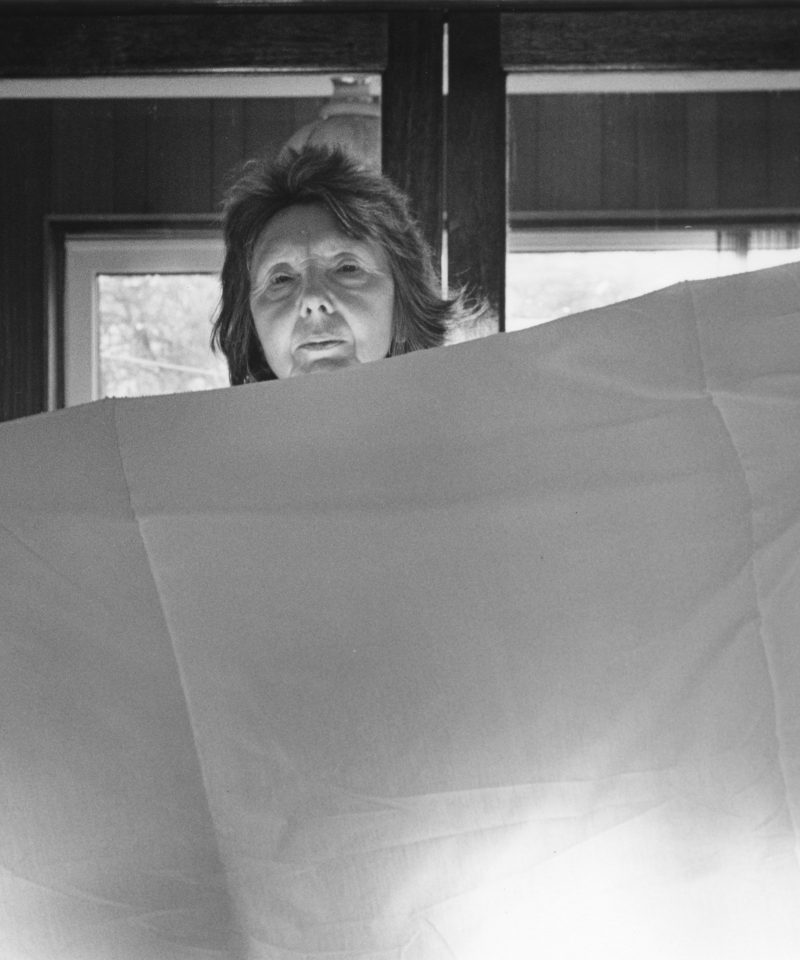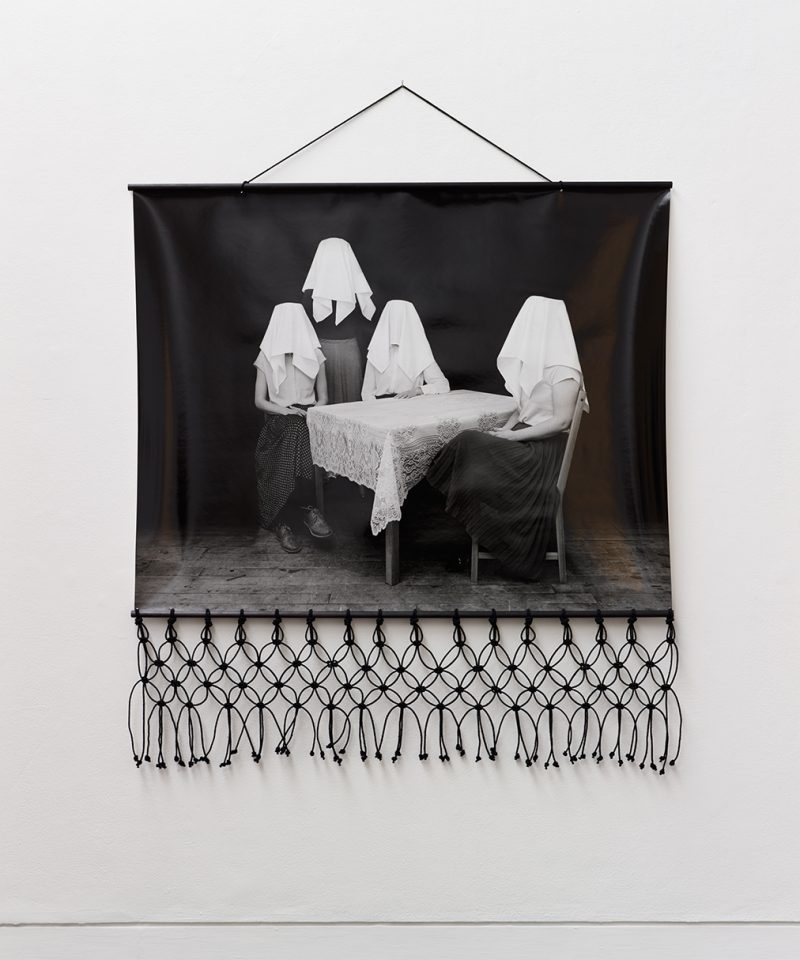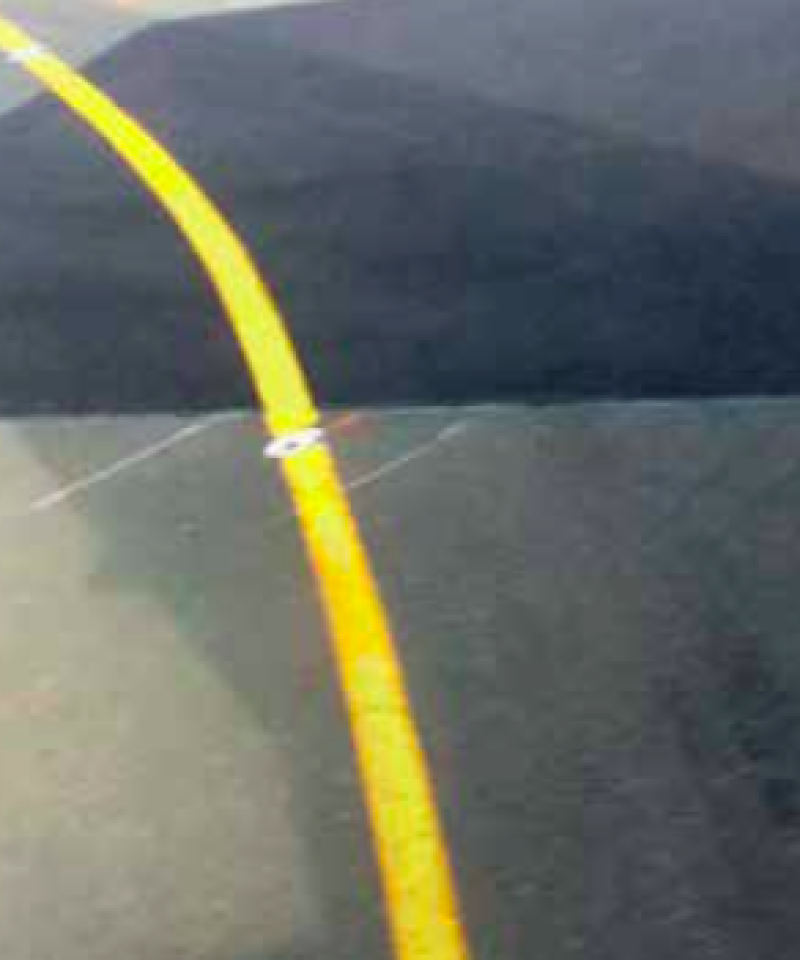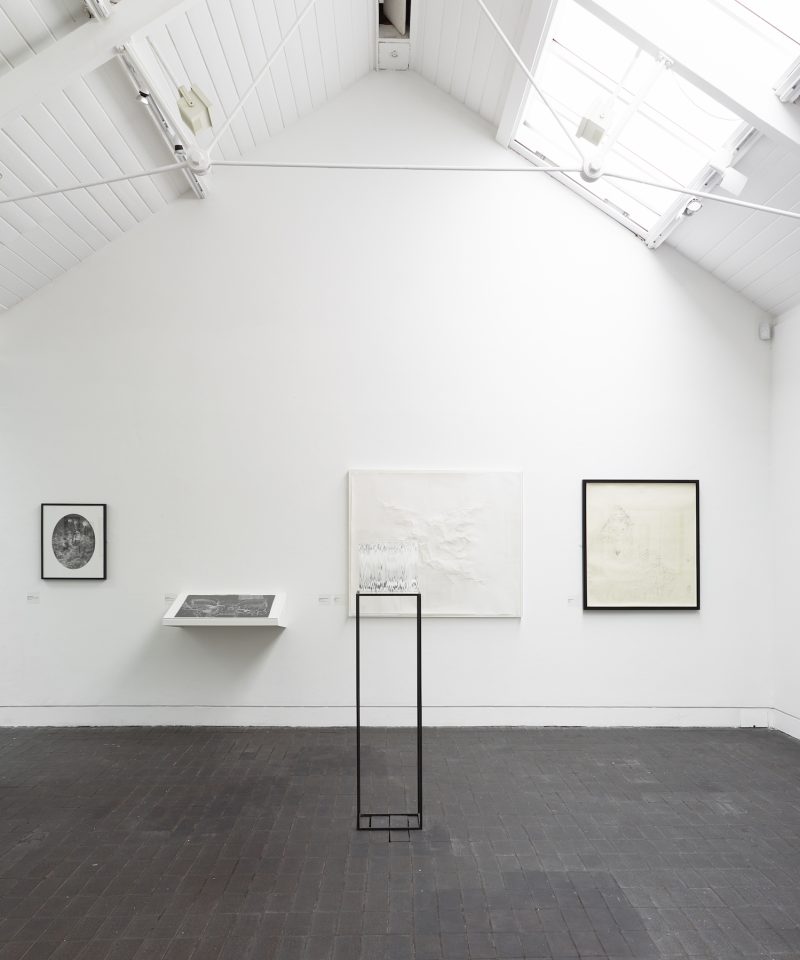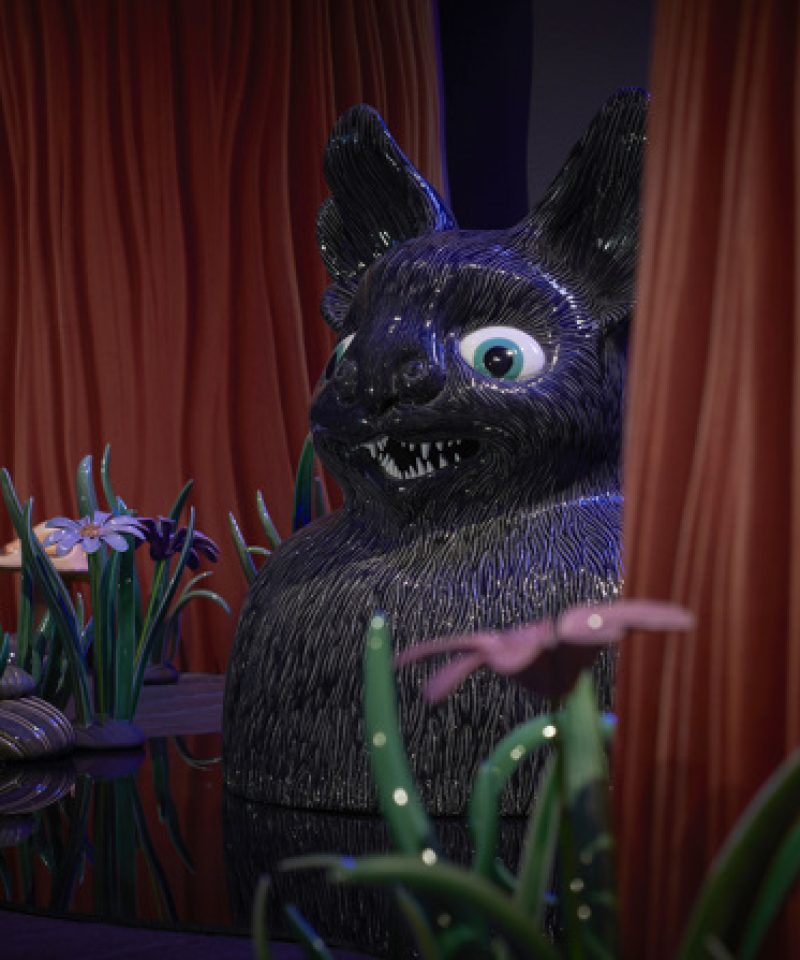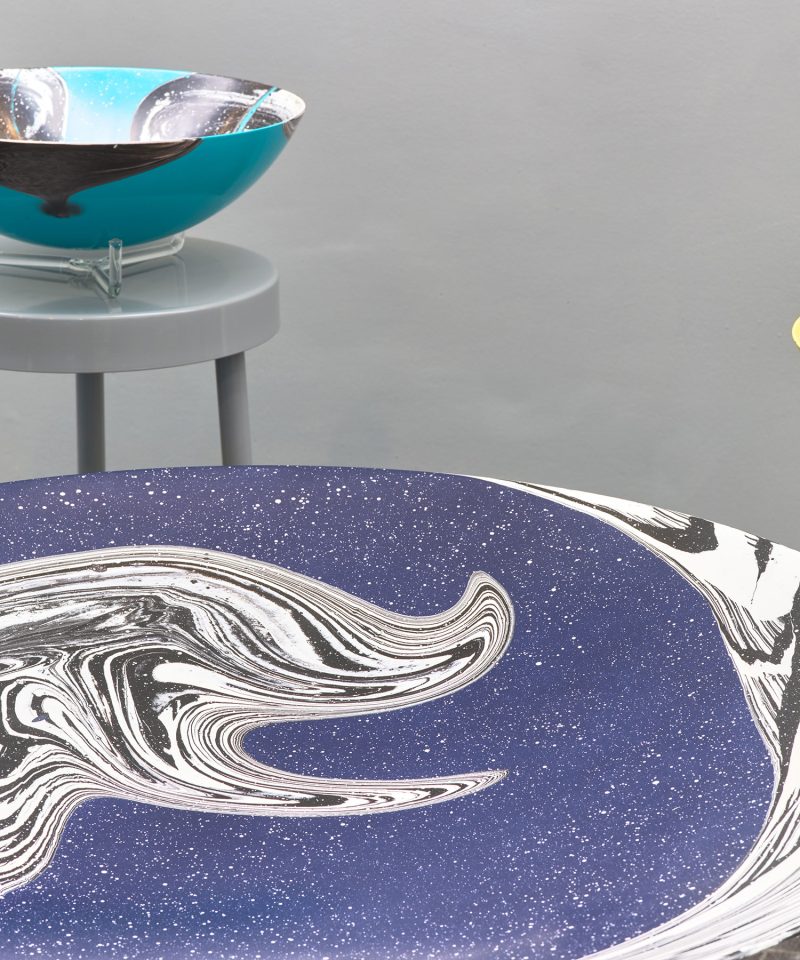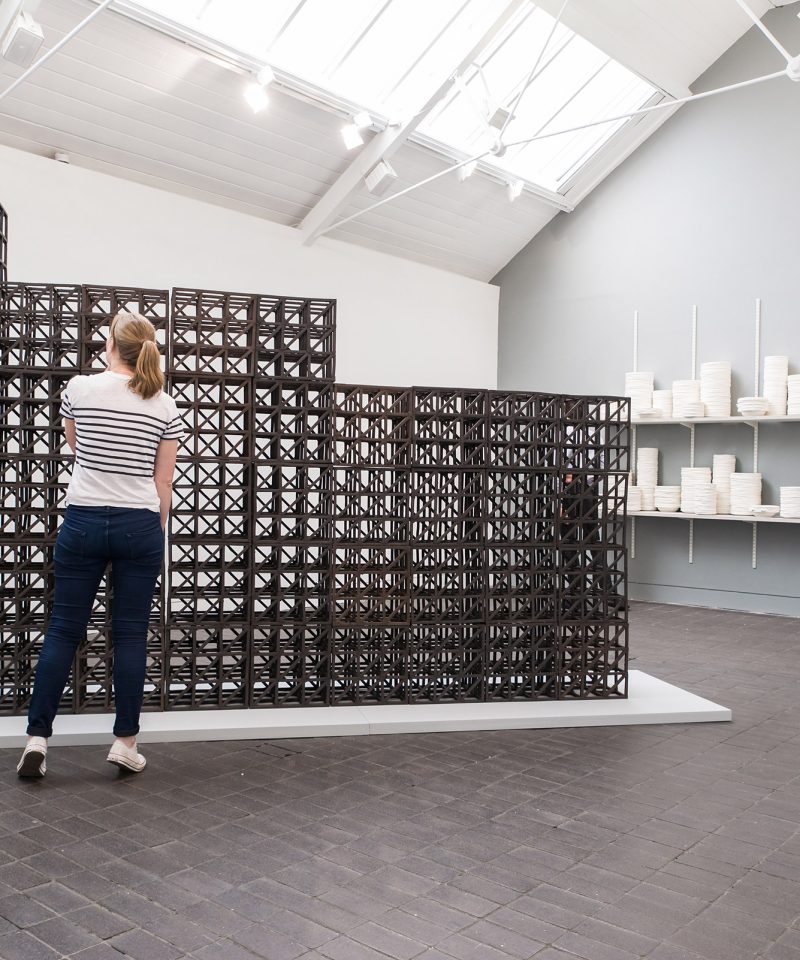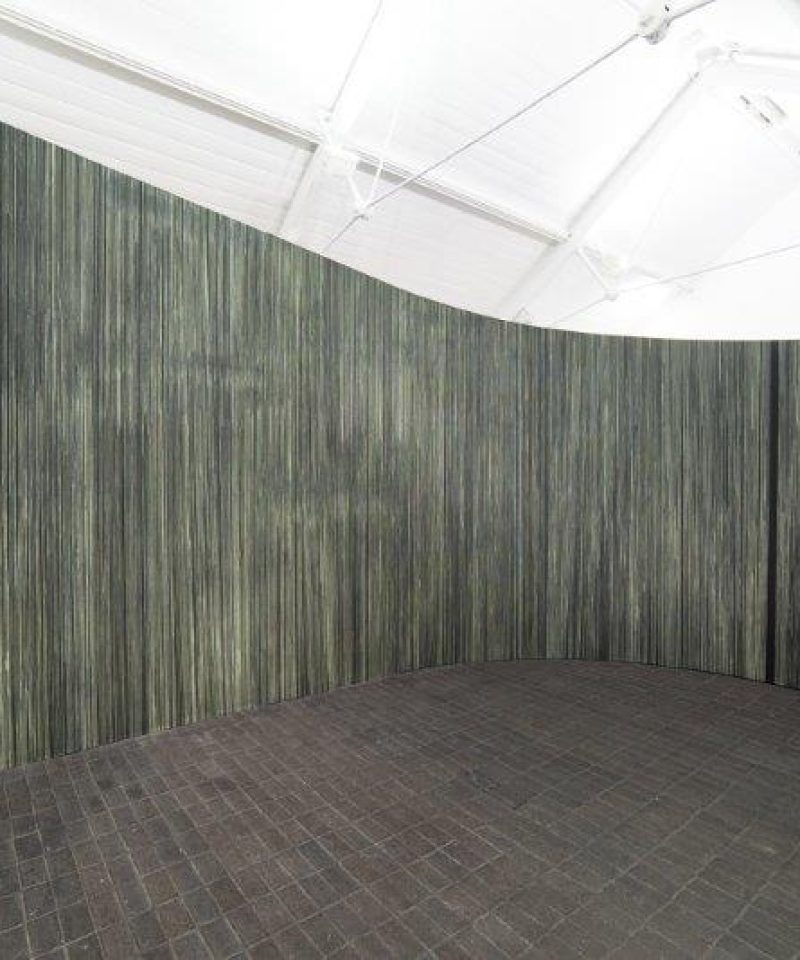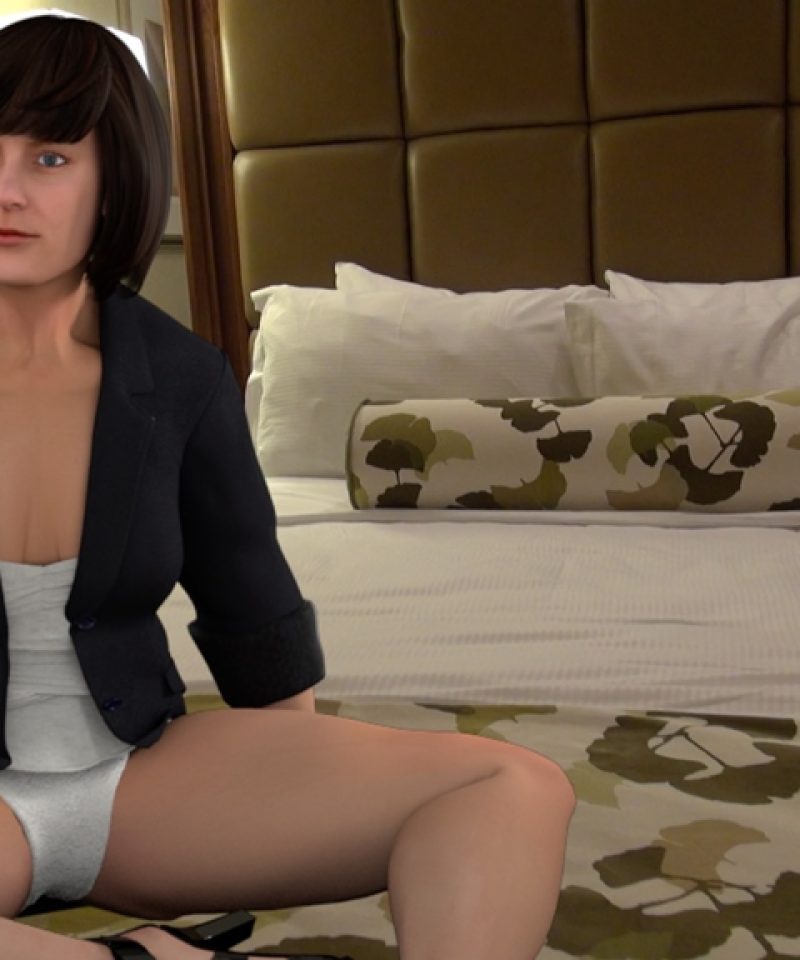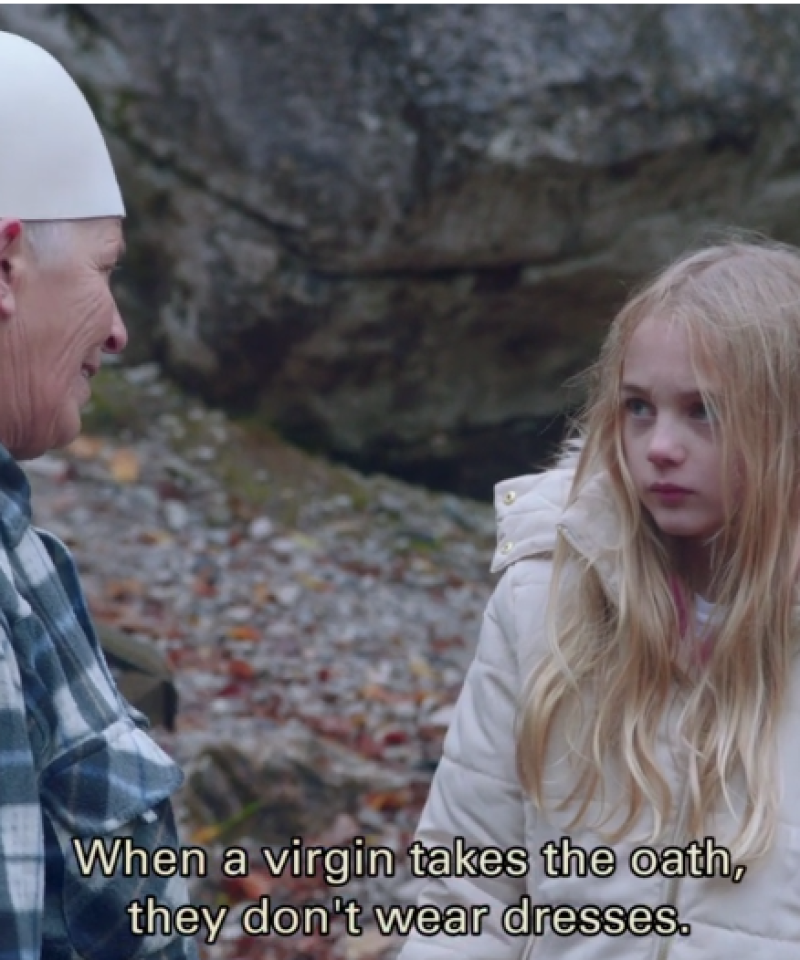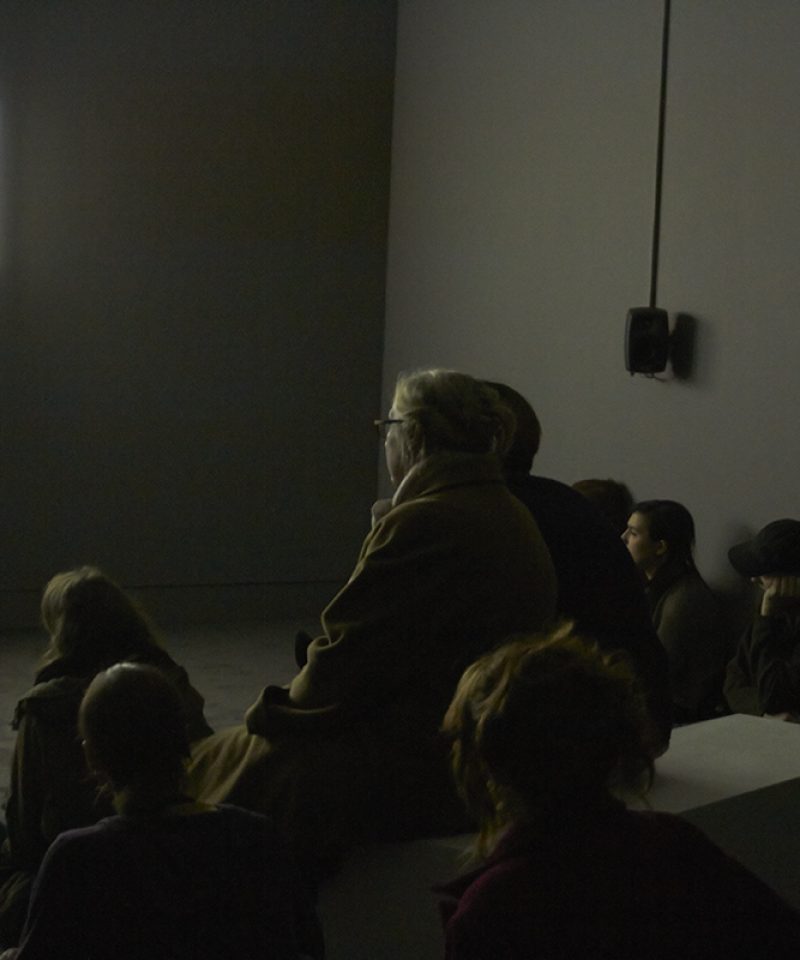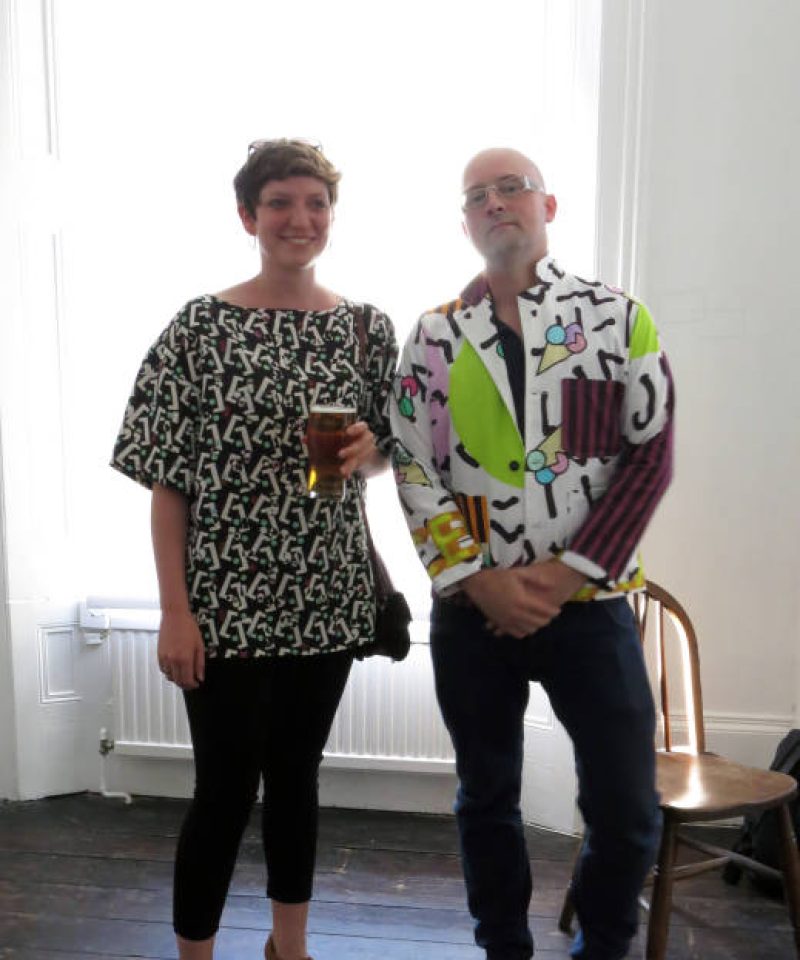1. Reality does not run along the neat straight lines of the printed page wrote Sadie Plant in Zeros and Ones, aligning the infinitely tangled webs of the internet with the infinitely tangled webs of language. In the liquid flow of the data stream, words become isolated fragments estranged from an organizing central narrative. The channels of the computerized network are a-temporal. Against time (as we know it), not in any way with it. To read on and with the screen is to trust your body, and all of its unpredictable eruptions, over the packaged and bound linear narrative. When the machine hums, your body hums too, and so does language. Brains… are not unified entities but hives or swarms of elements, interconnected multiplicities, packet-switching systems of enormous complexity, which have no centralized government (Plant, 1997).
2. In Georgie Grace’s video The machine is almost pure magic, swarms of appropriated linguistic fragments combine in a visual narration of aural silence. There is no spoken voice to guide us, only buzzing phonetic hives spelled out in neon text on screen: it is a script of unfinished sentences, leading us to an unknown, but tempting us somewhere. Before she writes, the artist listens and transcribes, scribbling down verbal events (scientific lectures or techno-talks, for example) in the contemporaneous moment of their speaking. It is the live copied (or forgotten), then re-ordered. Mediated by her tinkering hand. The individual voice becomes drowned out and buried by the process (performance) of transcription, so that the original author disappears in the artist’s edit, and she replaces him: I’m interested in the experience of reading and it wouldn’t be a reading experience if it were a listening experience, so how reading is mediated on screen is something that I am concerned with: do I remember things in the same way? Am I able to organise things in my mind when I have multiple tabs and screens open? (Georgie Grace, 2015, 15:03 PM).
3. Georgie harnesses Kenneth Goldsmith’s concept of uncreative writing (How do you determine who owns a piece of writing? 14:44 PM) to craft and model a script of stolen lines and lecturing rhetoric, re-modelled as a text of questioning and sensorial combat. Of displacement and replacement. The script is not linear or narrative-driven, but it does build, unfold in some sort of sequence of sense. Sentences meet and merge, then break with the artifice. Fracture with their cut-up arrangement. Georgie’s syntactical collections embody a kind of liquid flow, and excess, as they travel and accrete in multiple directions. Deriving from the transcription-research, the script contains unexpected overlaps: although the content of each speech is different, the tone and language is transferrable. Like a download. Or a copy and paste. There are jumps in it so it is not completely smooth but at the same time it has a flow so you can almost make sense of it. The appropriating impulse of the ‘uncreative’ writer mirrors (as in screen) the immaterial and uncensored walls of the digital network, where authorship and ownership become tangled in the hyperlinked blur.
4. The machine is almost pure magic reads like an enumerative instructive manual, an assembly of texts to compute and join together. A text-based narration, it nevertheless ‘speaks’ a language of promotion, profession, aspiration, and work, in ghostly emerald city intonations: ‘You have an extremely powerful and very, very flexible device / you can use it to influence people / you can use it to get a better job / you can use it to increase your prosperity’. It feels as planned and formulated as the digital system it describes, as it performs the language of impenetrable science in creepy imperatives. An ambiguous order to trust and repeat. Real science and fictional science, as Georgie said. When reading/watching, Georgie’s friend declared whatever it is I’m buying one! She thought it was selling her something, a sort of phantom product. As writer and artist, Georgie has constructed a text in which form and content merge and speak: the transcribed language of the lecture is shuffled anew by the artist so that it inhabits, in its fragmentary list-like form, the syntax of the machine. Phrases to click, estranged from a coherent centre. ‘you can put a command in a box,’ the artist writes in place of the anonymous machine of artificial intelligence, flowing into ‘and the box sends out a high frequency signal/ it shoots out a beam of light’.
5. Georgie’s video operates as a moving image, linked by cut-and-pasted stills (overlaid with cut-and-pasted language). Aesthetically, it embodies the ‘possibly analogue / possibly digital’ epithet in the script, used to describe the merging of corporeal and technological in a quasi-fictional machine, but equally an apt describer of Georgie’s film-making. Archive photographs of uninhabited sixties interiors are chopped into a mix of rippling animations and magnified grey materials. I was drawn to the idea of what reality is made of in its particles, pixels and half-tones – a focalized, immaterial materiality, in which the granular substance of the abstract background is not so far removed from the granular photographs shuffled in between. The images are filed and rearranged, akin to the ease of digital administration: it feels like a computational aesthetic of uploading and downloading, referring to the ways computers can sort images and understand them. File them irrespective of the date in which they were made. Nearly all of the images in the film document empty spaces, their textures mediated, virtual and digital, so that the past image (which also represents the epoch of cybernetic serendipity in art and technology) is relocated as an image of futurity. Of ‘cosmic significance’, or so says the script. And if the image is reduced to the atomic and molecular, so is the language. The artist manipulates linguistic material in the same way as a nanotechnologist, combing through the detritus of speech to refocus and reveal a fiction of her own.
6. From the form to the content. What does the posthuman machine that Georgie is transcribing, tracking and fictionalizing do? In Sadie’s silver smooth text, she wrote of a brain that ‘is body, extending even to the fingertips, through all the thinking, pulsing, fluctuating chemistries, and virtually connected with the matters of other bodies, clothes, keyboards, traffic flows, city streets and data streams’. In Georgie’s artwork, she extends this union further, writing a machine of mind-powered prosthetics, so that brain and body are computerized as one infinite and intelligent object. As the fragments of script direct us: ‘we’ll become machines that act like humans / technology and humanity are going to be converging / we’re going ethereal / like a snake shedding its skin.’ And in The machine is almost pure magic, the fiction of the immortal machine that flows and evolves from imagination to object over the course of the script, is communicated via Georgie’s writing: shedding the excess skin of language, she uncovers scales, molecules and atoms – which will eventually stick together again, to make another fiction new.
The machine is almost pure magic by Georgie Grace as commissioned through Jerwood Encounters: 3-Phase, a new artist development collaboration between two artist-led organisations Eastside Projects (Birmingham) and g39 (Cardiff), and Jerwood Charitable Foundation, through its London based gallery programme Jerwood Visual Arts.


